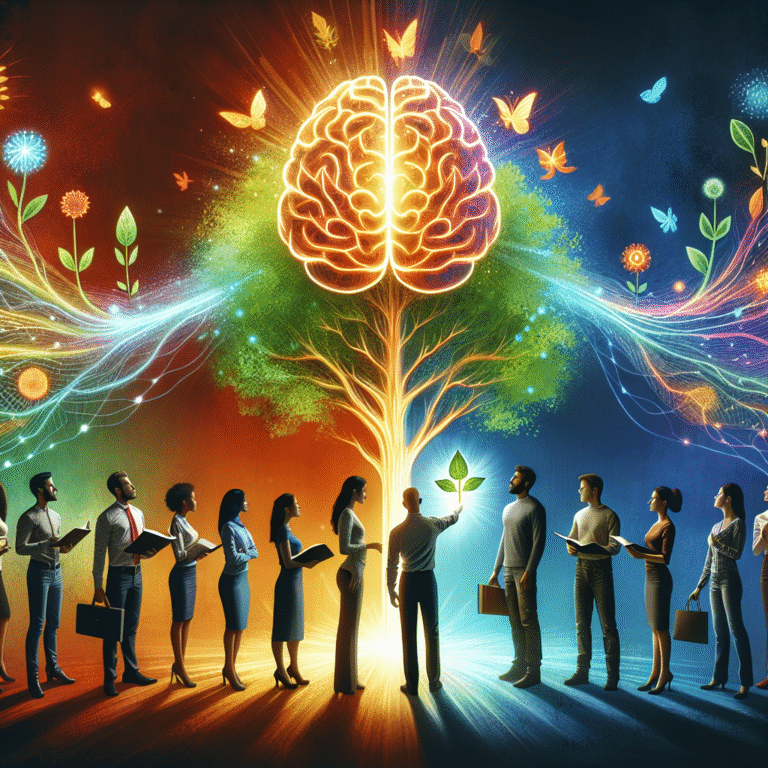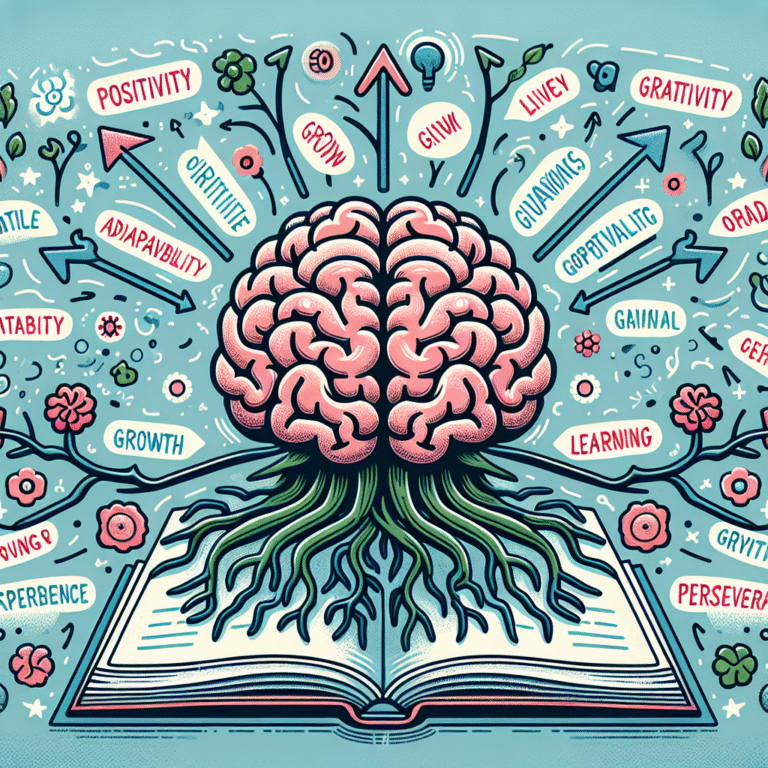
Introduction
In an age of information overload and fast-paced learning environments, understanding how to navigate the educational landscape has never been more essential. At the heart of this journey lies a crucial skill often overshadowed by traditional teaching methods: self-regulation. Whether you are a student striving for academic achievement, an educator aiming to enhance pedagogical strategies, or a parent supporting a child’s educational journey, the ability to self-regulate can transform challenges into stepping stones for success. In this article, we explore Navigating the Learning Journey: The Role of Self-Regulation in Education, offering insights and practical strategies to empower learners at every stage.
Understanding Self-Regulation
What is Self-Regulation?
Self-regulation refers to the ability to manage one’s emotions, thoughts, and behaviors in a way that promotes goal achievement. In the context of education, it enables students to set learning objectives, monitor their progress, and adapt strategies to overcome obstacles. This multifaceted skill encompasses three key components:
- Cognition: The mental processes involved in learning and problem-solving.
- Behavior: The actions taken to encourage or deter specific learning processes.
- Emotion: The management of emotional responses to enhance motivation and resilience.
Why Self-Regulation Matters in Education
As education shifts toward student-centered learning, self-regulation emerges as a necessary skill. It is not merely about discipline; it involves critical thinking, independence, and a proactive approach to overcoming challenges. According to a study conducted by the American Psychological Association, students who demonstrate strong self-regulation skills tend to achieve higher academic outcomes and exhibit better behavioral competencies.
Key Principles of Self-Regulation
Self-regulation is grounded in several foundational principles that guide effective learning:
- Goal-setting: Establishing clear, actionable objectives.
- Self-monitoring: Assessing personal progress towards these goals.
- Strategy selection: Choosing appropriate methods to tackle tasks.
- Reflection: Evaluating both successes and challenges after tasks are completed.
The Role of Self-Regulation in Learning Phases
Pre-Learning: Setting the Stage
Before diving into the learning process, students can benefit immensely from establishing a framework for their educational journey.
Case Study: SMART Goals for Effective Learning
In a study conducted at the University of Michigan, students who utilized SMART (Specific, Measurable, Achievable, Relevant, Time-bound) goals experienced a 25% increase in their overall performance. This method allows students to clarify their intentions and create a structured path toward achievement.
Key Takeaways:
- Specific: Define clear objectives.
- Measurable: Determine how to gauge progress.
- Achievable: Ensure goals are realistic.
- Relevant: Align goals with personal values and interests.
- Time-bound: Set deadlines to encourage accountability.
During Learning: Engaging with Content
Self-regulation during the learning phase focuses on implementing strategies that promote engagement and retention.
Case Study: Mindfulness in the Classroom
A 2017 study conducted by researchers at the University of California revealed that mindfulness practices improved self-regulation among middle school students, resulting in higher grades and reduced stress. Mindfulness encourages learners to focus on the task at hand, mitigating distractions and enhancing concentration.
Table: Mindfulness Strategies That Aid Self-Regulation Mindfulness Technique Description Impact on Learning Breathing exercises Helps calm the mind Improved focus Journaling Encourages reflection Enhanced self-awareness Visualization Helps in goal clarity Increased motivation
Post-Learning: Reflecting for Growth
Reflection is a vital component of self-regulation. It allows learners to examine their experiences, identify what worked, and make adjustments for future endeavors.
Case Study: Reflective Journaling in Higher Education
Research from the University of Boston indicated that students who kept reflective journals showed a 30% increase in self-efficacy. By documenting their thoughts and feelings about the learning process, students can gain insights into their personal challenges and triumphs.
- Analysis: Reflective practices promote metacognition, allowing learners to understand their cognitive processes better, thus enhancing self-regulation for future tasks.
Practical Strategies for Enhancing Self-Regulation
Time Management Techniques
Effective self-regulation starts with managing time wisely. Employing techniques like the Pomodoro Technique, where learners work in intervals followed by short breaks, can vastly enhance focus and productivity.
Example: The Pomodoro Process
- Choose a task.
- Set a timer for 25 minutes.
- Work until the timer goes off.
- Take a 5-minute break.
- Repeat.
Self-Monitoring Tools
Leveraging technology can aid in developing self-regulation skills. Apps such as Trello or Todoist can help students track assignments, deadlines, and progress.
Building a Support Network
Finally, self-regulation is not purely an individual endeavor. Building a support network—including friends, family, and teachers—can foster an environment conducive to self-regulated learning.
The Impact of Self-Regulation on Academic Success
Quantifying the Benefits
Education researchers have consistently shown that self-regulation correlates with enhanced academic performance. A meta-analysis published in the Journal of Educational Psychology indicated a 50% improvement in academic outcomes for students with well-developed self-regulation skills.
Graph: The Correlation between Self-Regulation and Academic Performance
(Here, we would insert a graph showing the positive relationship between self-regulation scores and GPA levels among students.)
Long-term Effects
The advantages of self-regulation extend beyond academics. Students who cultivate these skills often experience greater emotional stability and better interpersonal relationships, proving that Navigating the Learning Journey: The Role of Self-Regulation in Education is crucial for lifelong success.
Conclusion
The landscape of education is evolving, and the traditional classroom no longer suffices for all learners. As we navigate this journey, it is imperative to integrate self-regulation as a core component of educational strategies. By understanding its importance, implementing effective techniques, and promoting a culture of reflection and mindfulness, we empower learners to take charge of their educational experiences.
In summary, navigating the learning journey calls for commitment and strategy. By fostering self-regulation, we can inspire students not only to achieve academic success but to develop as well-rounded individuals equipped for the challenges of life.
FAQs
1. What is the first step in developing self-regulation skills?
The first step is goal-setting. Establishing clear objectives helps you create a structured path to follow.
2. Can self-regulation help in reducing stress?
Yes, effective self-regulation strategies, such as mindfulness and self-monitoring, significantly reduce stress levels among students.
3. How can I support my child in developing self-regulation skills?
Encourage your child to set goals and establish routines. Additionally, support them in monitoring their progress and reflecting on their learning experiences.
4. Are there any tools to help with self-regulation?
Yes! Tools like time management apps (Trello, Todoist) can aid in tracking tasks and deadlines, enhancing self-monitoring efforts.
5. How does self-regulation impact lifelong learning?
Self-regulation equips learners with the skills to adapt to new challenges, promoting continued personal and academic growth long after formal education ends.
By putting the principles of self-regulation into practice, we can empower individuals to navigate their learning journeys effectively, achieving not only academic excellence but personal fulfillment.















